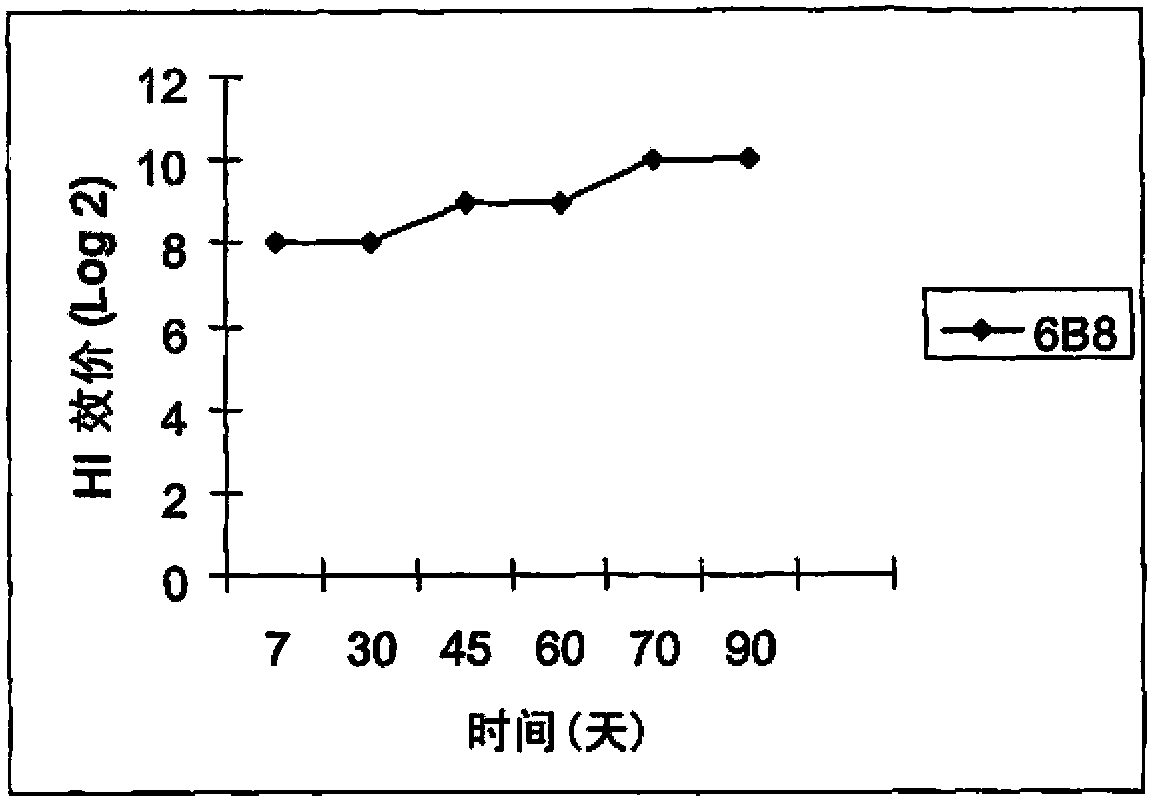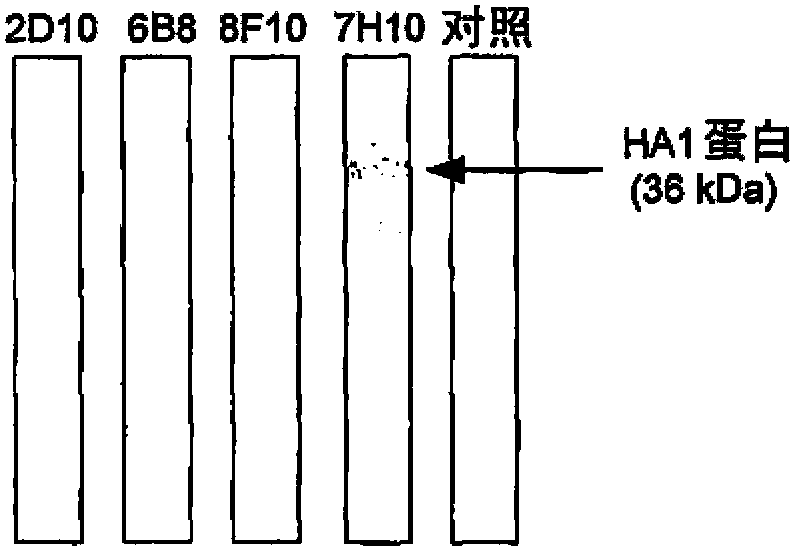H5 subtype specific binding protein capable of diagnosing and monitoring H5 avian influenza
A technology that binds proteins and avian influenza viruses, and is applied in the direction of antiviral immunoglobulins, microbial-based methods, biochemical equipment and methods, and can solve problems such as the diagnosis of high H5N1AIV strains
- Summary
- Abstract
- Description
- Claims
- Application Information
AI Technical Summary
Problems solved by technology
Method used
Image
Examples
Embodiment 1
[0071] Generation of hybridomas
[0072] The virus called H5N1 / PR8 was obtained from the US Centers for Disease Control. It is a non-pathogenic recombinant H5N1 influenza virus containing the HA and NA genes of the AIV H5N1 virus (A / Vietnam / 1203 / 2004) that infects humans in Vietnam. Another AIV subtype H5N3 (A / chicken / Singapore / 97) was obtained from the Agri-Food and Veterinary Authority (AVA) of Singapore. These two virus stocks were used to infect 9-11 day old embryonated eggs (Chew's Poultry Farm, Singapore) and allowed to replicate for two generations. Allantoic fluid was then drawn from embryonated eggs and virus titers were determined using a hemagglutinin assay (HA). These H5N1 and H5N3 viruses were purified by centrifuging virus-containing allantoic fluid at 10,000 rpm for 30 minutes to remove debris, followed by ultracentrifugation of the supernatant at 40,000 rpm for 3 hours. Resuspend the virus pellet in PBS.
[0073] Monoclonal antibodies (IgG and IgM) were pur...
Embodiment 2
[0078] Hybridoma Screening
[0079] Hybridoma culture supernatants were screened by hemagglutinin inhibition (HI) assay and immunofluorescence assay (IFA) as described below.
[0080] hemagglutination inhibition test H5N1 / PR8 virus obtained from CDC was used to infect 9-11 day old embryonated eggs (Chew's Poultry Farm, Singapore) and incubated at 35°C for 72-96 hours. After virus multiplication, allantoic fluid was extracted from the chicken embryo and used as H5N1 virus antigen. The HI test was performed on the culture supernatant of each hybridoma as previously described (15), using chicken hemagglutination and 4 hemagglutination units of the H5N1 / PR8 strain. Serially diluted hybridoma supernatants were initially diluted 1:50 and then mixed with 4 HA units of H5N1 / PR8 virus (inactivated with 0.1% β-propiolactone) propagated in chicken embryos and 0.5% (vol / vol) Chicken erythrocyte suspension was incubated together. Antibody titers corresponding to the reciprocal of th...
Embodiment 3
[0083] Identification of H5-subtype monoclonal antibodies
[0084] Stability of mAbs Hemagglutination inhibition assays were performed on individual hybridoma supernatants obtained at different times (7, 30, 45, 60, 70 and 90 days) to measure the stability of the cell lines. Dilutions were performed to calculate the endpoint. The HI titer of the hybridoma supernatant of mAb 6B8 was 29. The titer remained stable even down to 90 days (see figure 1 ). Therefore, hybridomas secreting mAbs of H5 antigen can maintain high-efficiency value for a long time.
[0085] mAb typing (Isotyping) Typing was performed using the Mouse mAb Typing Kit (Amersham Bioscience, England) (data not shown). Isotypes 6B8, 8F10 and 2D10 were identified as IgM and 7H10 as IgGl.
[0086] mAb specificity analysis The H5-subtype mAbs cross-reacted with the related H5-subtype AIVs H5N2 and H5N3 and also with non-H5-subtype influenza viruses H3N2, H4N1, H7N1, H9N2 and H10N5. Cross-reactivity was d...
PUM
 Login to View More
Login to View More Abstract
Description
Claims
Application Information
 Login to View More
Login to View More - R&D
- Intellectual Property
- Life Sciences
- Materials
- Tech Scout
- Unparalleled Data Quality
- Higher Quality Content
- 60% Fewer Hallucinations
Browse by: Latest US Patents, China's latest patents, Technical Efficacy Thesaurus, Application Domain, Technology Topic, Popular Technical Reports.
© 2025 PatSnap. All rights reserved.Legal|Privacy policy|Modern Slavery Act Transparency Statement|Sitemap|About US| Contact US: help@patsnap.com



